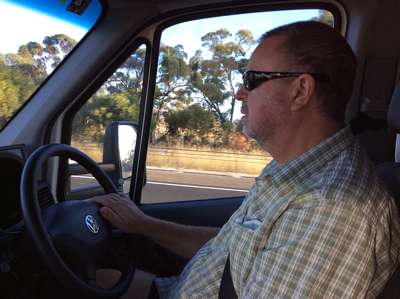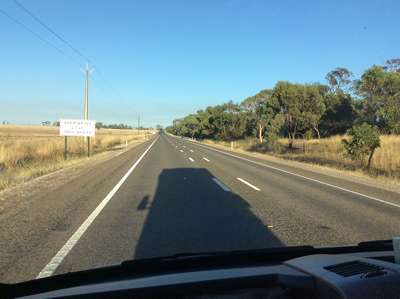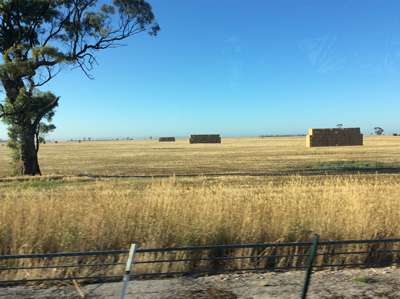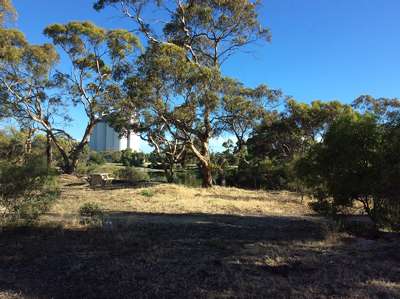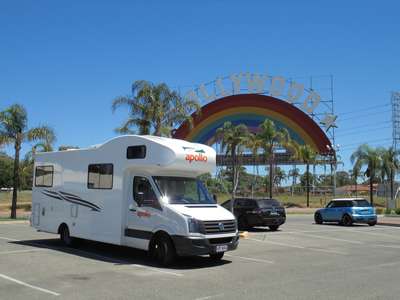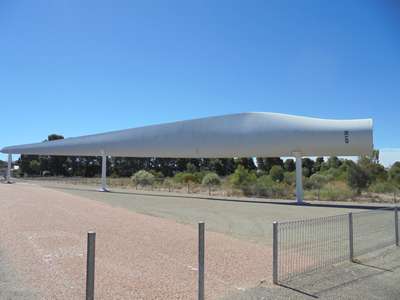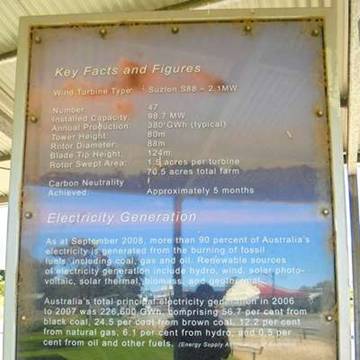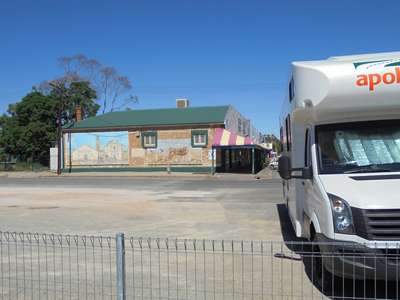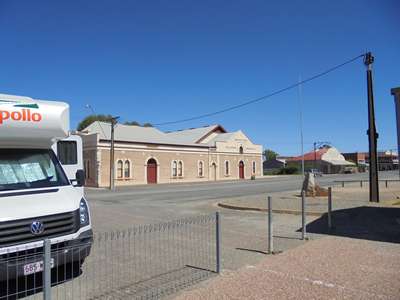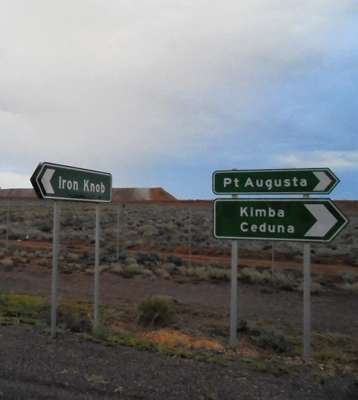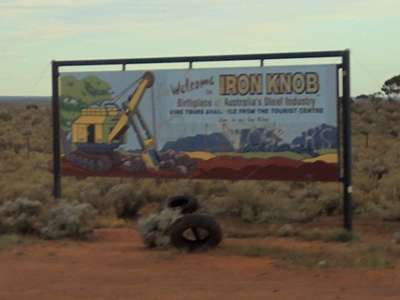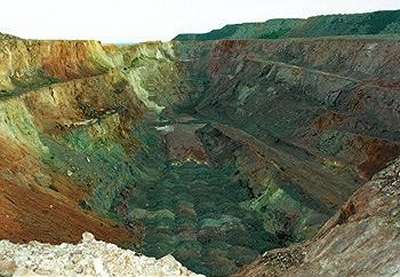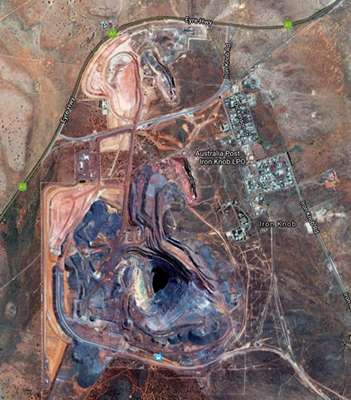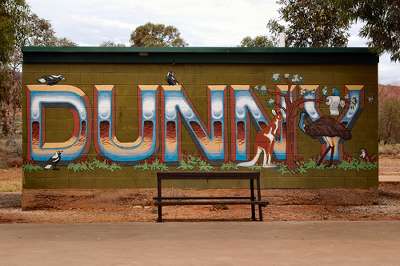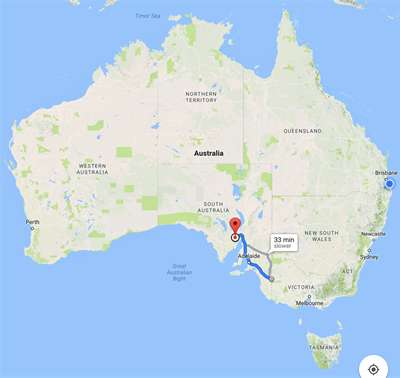Day 2 - SA border to Iron Knob

|
Friday 3rd February 2017 Day 2 – distance driven 672 km
(Total - 1108 km) Serviceton – Tintinara – Adelaide – Dublin
– Snowtown – Port Augusta – Iron Knob We had a peaceful night at the rest stop and slept
well. Our plan, given the long distance we have to drive and the hot
weather, is to get on the road fairly early each morning and clock up the
kilometres while it is still cool. This morning it wasn’t just
cool, it was blinking cold! Neither of us had thought to pack a top layer
other than waterproofs as it has been so hot and dry for so long. We
decided a stop at K-Mart or Target might be a good idea to pick up a cheap
fleece if we happened to pass one. Having crossed the state border into South Australia pretty
much as soon as we turned out of the rest area, we were now heading west on the
Duke’s Highway. It was just after 7 a.m. and the sun was shining in
a bright blue sky as we passed field after field of stubble, the wheat having
already been harvested.
Steve comfortable at the wheel. Our
own long shadow as we head west with the sun behind us.
Wheat fields as far as the eye can see, already
harvested. We passed through the rather boringly-named town of Keith
before making a breakfast stop beside Lake Indawarra, Tintinara.
Lake Indawarra, with grain silos in the background. Once on the road again we started a climb upwards to the summit
of Mount Barker, then descended steeply directly into the city of
Adelaide. We had no plans to visit the city centre, having been here
before, and with so many new places to see, so skirted around the edge.
We found a local shopping mall with a Target, and Steve bought himself a cheap
hoodie in case of more cold mornings or evenings. We smiled at the name
of the shopping mall – Hollywood Plaza, and couldn’t resist taking
a photo of the van in front of the sign.
Are we in Oz or the US? We stopped for lunch a further 60 km along the road at the
small town of Dublin, and as we drove on we noticed a brown tourist sign
depicting a single wind-vane blade. Steve followed the sign and turned
off into the small town of Snowtown, and sure enough, beside the road there was
a single wind-vane blade. The size of these things never cease to amaze
me, but there my interest ends, so I made a cup of tea and buttered some currant
buns while Steve read the information boards. (I was also thinking of a
couple of topics for conversation that might head him off before he passed on
all his new-found knowledge of wind vanes to me...)
A very interesting wind vane blade, and loads of
interesting information about it. Apparently a wind farm is being built
nearby.
An extremely sleepy little town, not a soul about in the
middle of the afternoon. Taking refuge from the heat indoors, probably. It was my turn to drive, and fortunately I was spared a
lesson on wind generators because Steve was telling me instead about this
little town being made famous in 1999 for the Snowtown Murders.
Apparently the remains of eight bodies were found in barrels of acid stored in
the bank’s vaults. Maybe that’s why there was no one to be
seen. Time to head away as fast as possible then, methinks. We arrived in Port Augusta in the early evening, and had
thought we would have a wander around and then find somewhere to park for the
night just outside of town. Port Augusta is known as the
Crossroads. Head North on the Stuart Highway and you will end up in
Darwin. Head East and you will arrive in Sydney. Go 310 km South
along the Princes Highway to Adelaide. And if you go West along the Eyre
Highway, as we will, you will reach the Nullarbor Plain and then Perth. Once a busy port, the town was the place where wheat and
wool were loaded on clipper ships and transported around the world. By
the 1970’s that had ceased, and the town had instead turned to tourism
because of its unique geographical position in the country. We expected a
thriving, busy town, but that was not the case. Instead it had a bit of a
run-down, uncared-for feel to it. We took a turn around the town, taking
in the older Colonial buildings and the Mural on the Hill, but it was too late
in the day to visit the Wadlata Outback Centre, the award-winning information
centre. Feeling a little let-down we decided not to stay until the morning but
to press on to Iron Knob, a small town 70 km along the Eyre Highway.
We turned off the Eyre Highway and into the tiny township
of Iron Knob. The mining of iron ore began here back in 1880 at Iron Knob
Hill, seen behind the road sign for the town, and continues today. The hill is now
150 metres shorter than it was back then. The iron ore extracted was of
such high quality that it gave rise to Australia’s steel industry, as the
large sign on the approach to the settlement proudly declares. 21% of the
steel used in the construction of the harbour bridge in Sydney came from Iron
Knob, the rest had to be brought all the way from the UK.
Inside the Iron Knob quarry (photo courtesy nullarbornet.com.au) Google
Earth satellite image of Iron Knob hill and township. Although a tiny community, the town had provided a very
pleasant camping area, payment by donation towards the upkeep of grounds and
facilities. We were grateful to them and glad to pull in after quite a
long and busy day.
This cheerful mural painted on the back of the ablutions
block made us smile. (Photo courtesy geoview.info)
Google map to show today’s route from the border to
Iron Knob. Now
at the north-east corner of the Eyre Peninsula. |
